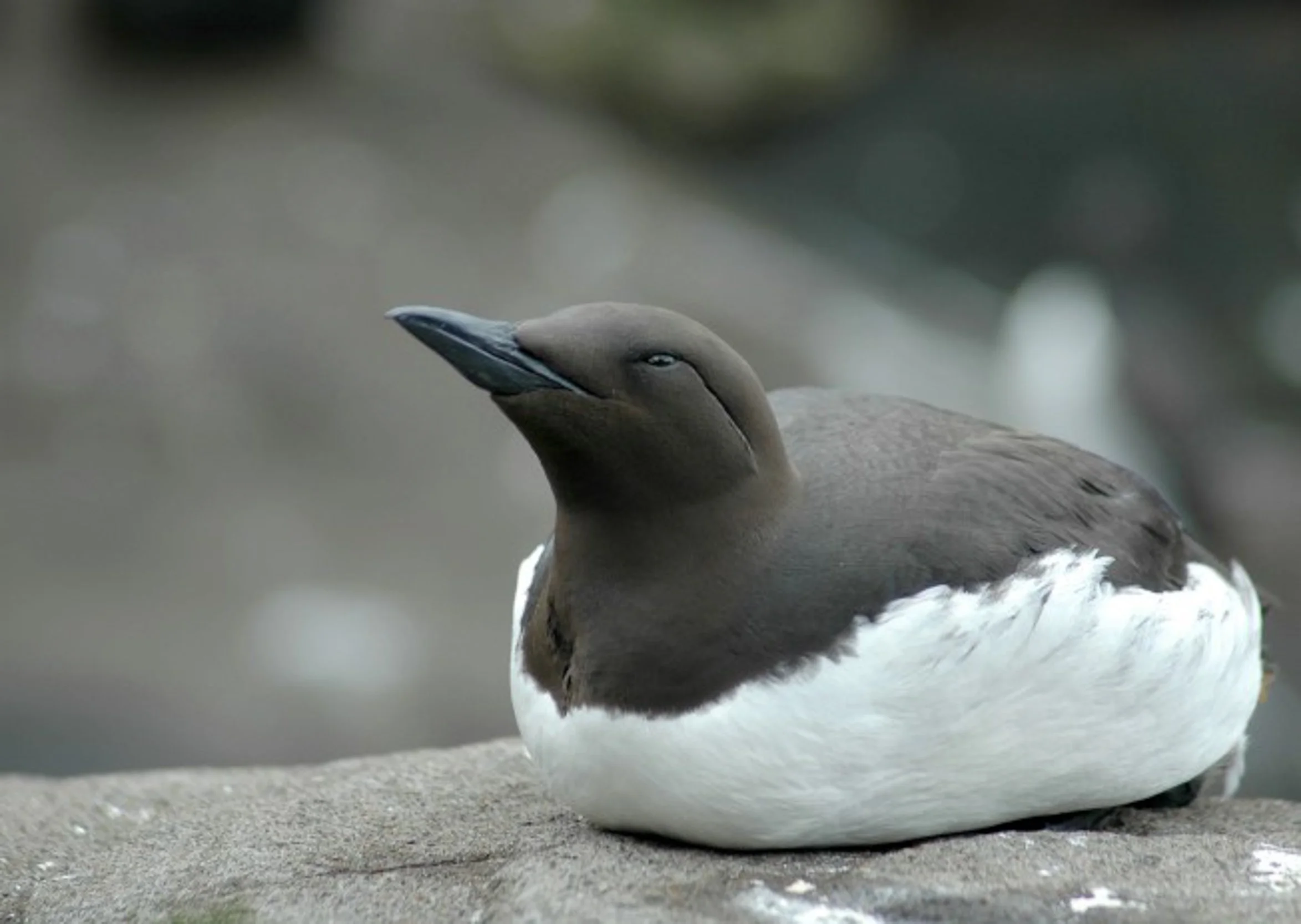Im-murre-sion therapy
Photo courtesy Oregon Coast Aquarium
By Michael Edwards
For the TODAY
Molly, the Texas stray, makes a beeline towards a penguin-looking bird standing still at the wrack line, peering out into the frigid surf.
From May through August, common murres lay their colorful, pear-shaped eggs and rear their chicks on the rock islands of Depoe Bay and Yaquina Head, while out at sea, juvenile “jumplings” cry for food as their fathers fish in the dimly lit waters far below the swells.
A beach-bound murre, like the one Molly discovers, is a bird in distress.
Molly’s beach walk is cut short and up the beach access stairs we go. I call 541-867-3474, press #3 and even at 8 am on a Sunday, a staff member at the Oregon Coast Aquarium answers the phone — instructs me to bring the murre to the rehabilitation center and reminds me not to feed it.
On an earlier rescue, I neglected to call the aquarium first and instead attempted to coax the bewildered murre into eating a teaspoon of Bumble Bee tuna.
Jacques Cousteau I am not.
I drop the dog off at the house and haul a laundry basket and towels back down to the beach to collect the distressed seabird. The murre waddles towards the surf but it’s spent and doesn’t bother to flap its short powerful wings.
After a few half-hearted pecks and two guano saturated towels, the murre is delivered to the aquarium. A friendly staff member meets me at the fence, boxes up the murre and hands me a card with an identifying number and contact information that will allow me to check on the bird’s status.
Murres fly at a top speed of 55 miles per hour and use their wings to swim to depths greater than 300 feet in search of small fish. Because the murre’s vigorous life is lived in a cold and unforgiving environment, the seabird must consume 56 percent of its body weight, per day, just to maintain its metabolism. Any reduction in the population of bait-fish affects their survival.
In 2015 and 2016, an oceanic warming event known as the “Blob” infiltrated coastal waters from California to the Gulf of Alaska and led to the deaths of an estimated one million murres. Many died because they were caught in an endothermic vice.
In an endothermic vice, warm water diminishes the nutritional quality of tiny zooplankton. Bait-fish eat the low-quality zooplankton and struggle to put on fat. Murres then must eat significantly more “skinny” bait-fish than they would normally eat if the fish were of typical size. The warming ocean also increases the metabolism of predatory rockfish, which causes them to eat more of the same bait-fish that murres rely on for survival.
Unfortunately for murres, there are only so many bait-fish to go around.
The high number of murres found distressed on the beaches this summer might have been the byproduct not of the “Blob” but of a successful hatch. For a variety of reasons, young murres don’t always thrive and sometimes out at sea they are separated from their fathers.
Even though proportionally just as many young birds might have been in distress this year as is normal, because there were more birds born overall, the number of murres wandering Oregon’s beaches increased.
When a seabird is brought to the aquarium, Curator of Birds CJ McCarty and her team check the bird’s temperature and weight. If the bird is underweight, it is tube-fed clear fluids or a nutritionally balanced liquid diet, made especially for fish-eating animals, every two hours. After 18 to 24 hours of the liquid diet, the murre is offered fish. If the bird remains stable after 48 to 72 hours, it is transferred to the Wildlife Center of the North Coast in Astoria. There, staff ensure it gains weight and muscle, is able to dive, that its feathers are waterproof and that it is healthy enough to re-enter the wild.
So far this year, CJ and her team have cared for 235 seabirds and, of the 125 murres that the aquarium received, 50 survived initial stabilization and were shipped to Astoria for further rehabilitation.
Currently, this labor-intensive work is done in addition to the staff’s primary mission of caring for the aquarium’s 80 resident seabirds, turkey vultures and ambassador pelicans. A $5 million grant from the Roundhouse Foundation will allow the aquarium to build and staff a modern veterinary clinic and wildlife rehabilitation center that will provide onsite care for the aquarium’s animal collection, the harbor seal wrapped in fishing line, the emaciated murre and even the occasional chilled sea turtle.
The next time you visit the aquarium’s Seabird Aviary Exhibit, listen in on one of the bird team’s informative presentations about the alcids of the Central Oregon Coast.

